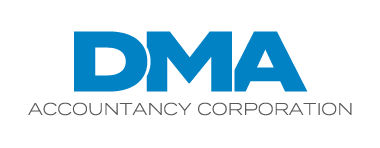The first thing every employer should know about organizational culture is it’s inevitable. If you create a working environment, a culture will develop within that environment whether you like it or not. That’s why employers must address culture openly and proactively.
Be forewarned: Establishing and maintaining a strong organizational culture isn’t easy. Earlier this year, human resources (HR) news and insights publisher HR Dive posted an article discussing the results of its Identity of HR 2024 survey. It gathered responses from 490 HR professionals on what they considered to be their greatest challenges in 2023. One might reasonably expect hiring or compliance to top the list, but culture came in first with 26% of responses.
Naturally, every organization’s culture will differ somewhat based on its industry, purpose, size and other factors. But there are certain key building blocks that tend to pertain to all employers. Here are five to start with:
- Clearly stated mission, vision and values. As mentioned, addressing culture openly is critical. If no one is paying attention, or culture is considered a myth, it can go in a bad direction. A good place to start is with carefully crafted mission and vision statements, along with well-articulated values. A mission statement concisely declares your organization’s core purpose, whereas a vision statement explains your long-term goals in fulfilling that purpose. Values are the defining characteristics (such as integrity or an innovative mindset) that should drive employees’ behavior, internally and externally.
- Top-down commitment. Nothing implodes organizational culture faster than leadership that ignores the issue or behaves contrary to stated cultural descriptors such as mission and vision statements. Those in executive leadership positions need to be keenly aware of your organization’s distinctive culture and positive advocates of it. They must be transparent in their actions, accessible to employees at every level and effective communicators.
- Plentiful channels of communication. Upper management isn’t alone in its responsibility to communicate well. Everyone needs to do that — whether middle manager, supervisor or rank-and-file employee. Organizations with the strongest cultures tend to set up multiple feedback channels through which staff can share concerns, thoughts and innovative ideas. Examples include:
- A robust performance management system that keeps supervisors in close touch with their teams,
- Online chat rooms where employees can voice concerns or contribute ideas anytime and from anywhere, and
- Regularly scheduled “town hall” meetings where leadership can communicate directly with everyone and field questions.
- Mutual trust and empowered employees. Among the strongest drivers of positive organizational culture is trust. And that works both ways: Staff must trust leadership to guide the organization toward its goals and leadership at all levels must trust employees to do their jobs well and make good decisions. Be sure you’re regularly assessing trust within your organization and determining whether staff members believe they have enough autonomy to do their best work.
- Recognition and rewards. Occasionally telling employees that they’re valued isn’t enough. Thriving cultures demonstrate recognition openly and reward top performers for accomplishing stated objectives or going above and beyond. If you haven’t already, consider developing an equitable and energizing rewards system that incentivizes staff, perhaps through financial bonuses or other means. Also, be sure you’re doing the basics, such as celebrating work anniversaries and publicizing promotions.
These five building blocks are just a starting point. Every organization’s culture will need to have certain foundational elements to succeed. In addition, bear in mind that times change — your culture needs to be adaptable to both the internal and external forces that may affect your operations. Ultimately, a well-nurtured organizational culture is imperative for driving productivity and financial performance.
© 2024


Recent Comments